After 2 days of standard packaged tours (Coron Island and nearby beaches), time for some DIY. Both Calauit and dugong tours are expensive standalone tours available from Coron. With some help from my awesome guesthouse, I was able to check out these 2 attractions without a tour for a fraction of the usual price. Here’s how I did it!
About dugong watching and Calauit Safari Park
There are tour packages to dugong watching and Calauit Safari Park, both are quite pricey (~6000 PHP to see dugongs, ~2500 PHP for Calauit, including Black Island and Concepcion), and may not run if there are insufficient guests, unlike the boat tours which run everyday except in bad weather. However, if you’d like to see another unique side of Coron beyond the beaches and wrecks, it’s possible to arrange these without a tour agent, but with some hassle. If you have a group you can rent a car/ van instead of a bike as I did. Most people skip these places if they’re short on time. If you have some time, I’d recommend checking out this wild side of Coron, not just because it is different from the rest of Coron, but how often do you get to see dugongs, or giraffes and zebras roaming freely in Southeast Asia?
An eventful trip from Coron Town to Salvacion
The sky was a little dark, but I was hopeful it’ll hold up for some time. We left slightly past the scheduled leaving time at 6am. All was fine till we topped up gas just outside town. Immediately after leaving the gas station the driver knew something was up. Turns out we had a puncture. A couple of minutes later the rain started. The driver took the bike back to town to fix it, while I waited under some shelter nearby. The guesthouse owner (whom the bike was rented from) turned up soon after. Turns out the house across the road belonged to a friend of the guesthouse owner, so we waited there for the driver to return.

Turns out the tire was a tubeless and just needed a pump rather than a replacement. To avoid further issues the guesthouse owner swapped bikes for us and off we went into the rain. We didn’t have helmets and the rain made it uncomfortable. The driver stopped by his mum’s place to get sunglasses while I used my googles. Looked a little dumb but it worked. About an hour behind schedule at 9am, we arrived at Salvacion to purchase tickets to Calauit.
If you’re staying in Coron Town you’re supposed to purchase tickets there. If you’re staying up north then you’re supposed to get it from Salvacion at the Tourism Office. However I couldn’t wait till the office in Coron Town opened as leaving Coron Town at 8am would make it impossible to complete the itinerary, so I had to make some adjustments.
More trouble
That wasn’t the main concern now, as the seat of the bike refused to open and my money to pay for the ticket was inside. Tried for what felt like a long time but nothing worked. We pushed the bike into the office and the helpful staff came out in full force with their tools to help us pry open the seat. That took quite a bit of figuring out too. In the end we were quite behind schedule, with dreary weather to contend with.

Quite a hassle and everyone’s hard work later, I finally settled tickets to Calauit. Entering Calauit Safari Park costs 600 PHP for foreigners (500 entrance fee, 100 environmental fee). For locals entrance is 300 PHP. Next, to Quezon village for the boat to the dugong area.
Salvacion to Aban Aban Bay
Somewhere slightly further up north, the road splits, one towards Calauit Safari Park, the other, an unpaved dirt track towards Quezon village. The ride there was bumpy and difficult. This was where I was really thankful for not having attempted to ride the bike here on my own. The driver expertly navigated rocks, mud and puddles in the rain. We arrived at Quezon village around 10am, and the driver looked around for the boatman that the guesthouse had arranged for. The boat ride was 1500 PHP, which I paid after the ride. I think the price ranges between 1500 and 1800 PHP.
The 3 of us (driver, boatman and me) then got into a small wooden boat and headed across the water to the marine park office. Paid the park fees (500 PHP), a park ranger/ dugong guard joined us on board and off we were towards Aban Aban Bay. Along the way I was briefed on rules to follow when observing the dugong, such as always keeping a considerable distance from them.
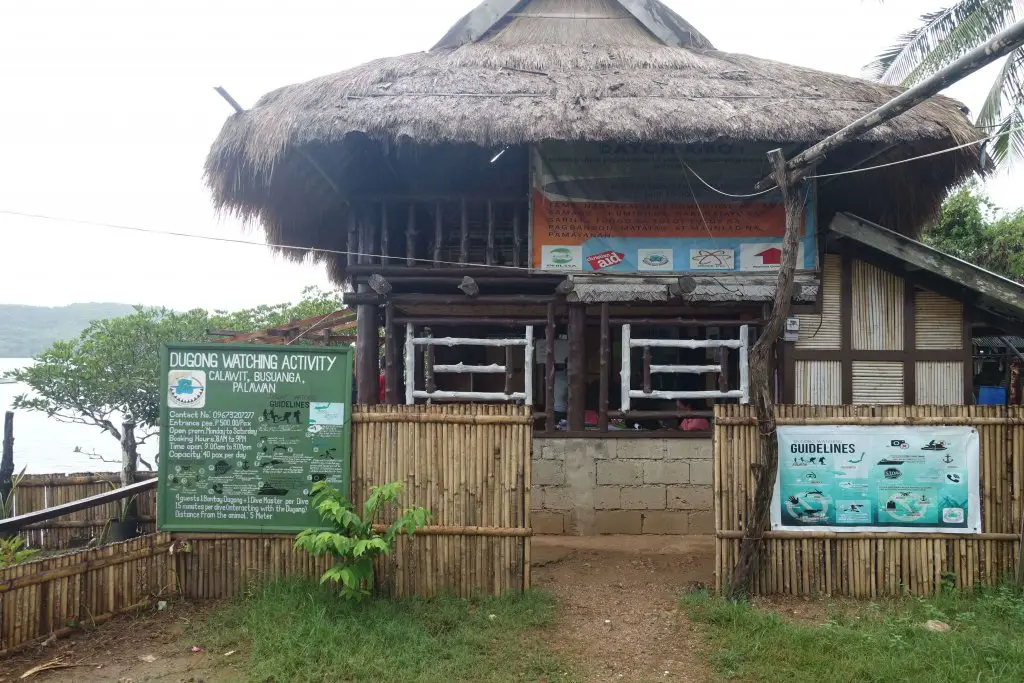
There’s an organization coordinating efforts to protect the dugongs, educate locals and tourists, as well as regulate tourism activities so that tourism and conservation can be done in a sustainable manner and locals can benefit too. More information about these activities here.
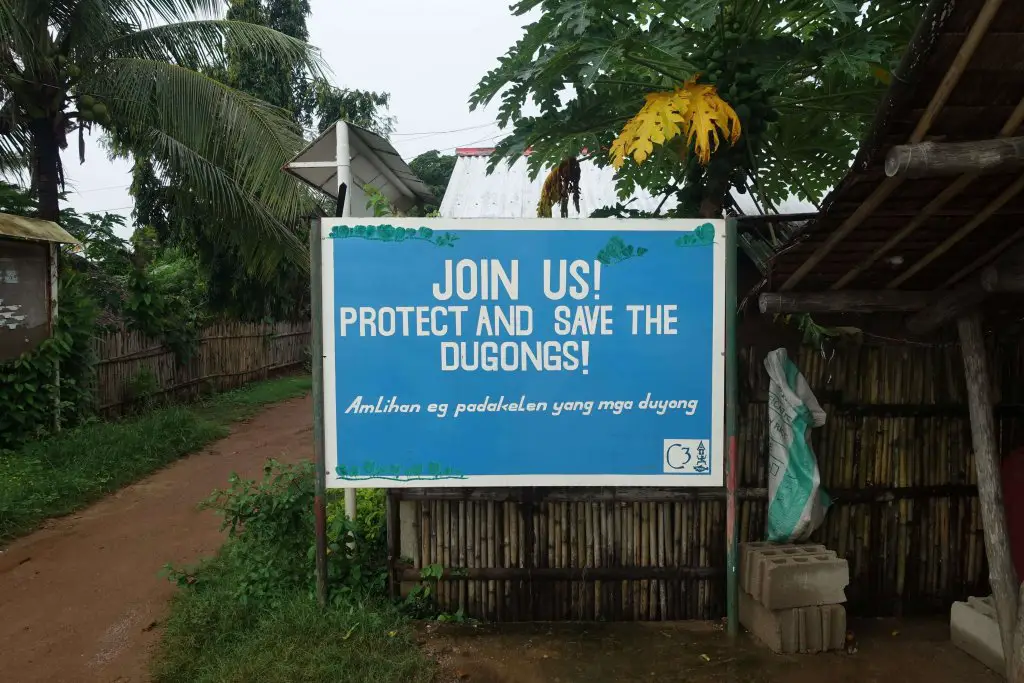
Dugong watching at Aban Aban Bay
There are a couple of identified dugong habitats in the surrounding waters. Only Aban Aban Bay is open to visits, as the resident dugong, Aban, there is known to be more friendly, and the other areas are left as conservation areas. Dugong are solitary animals so we were likely to just spot one, at most. Along the way I realised there was no life jacket on board and got nervous, as I couldn’t swim well. The dugong guard assured me it would be fine just to hold on to the float he brought with him. If you’re not comfortable with swimming you might need to make arrangements to have a life jacket before the trip.
Soon after I jumped in I panicked and hit the side of the boat, earning a deep gash that bled quite badly. Fortunately it didn’t hurt. I held on to the float while the guard pulled me along. Flippers I rented in Coron Town (100 PHP) helped me keep up, while the snorkeling mask I rented from the guesthouse (150 PHP) allowed me to keep my head underwater to try to spot the elusive creature. I took awhile to figure out the mask, and water kept coming in before I figured how to use it.
The first round we went, there wasn’t much going on underwater. It was about 20 or 30 metres deep and I couldn’t see the sea floor clearly, but the guard was able to spot a sea turtle (missed it) and a stingray (below). I didn’t see it from the surface though. Wasn’t confident to dive in, so here’s a still from the action camera he helped to dive down and take for me.
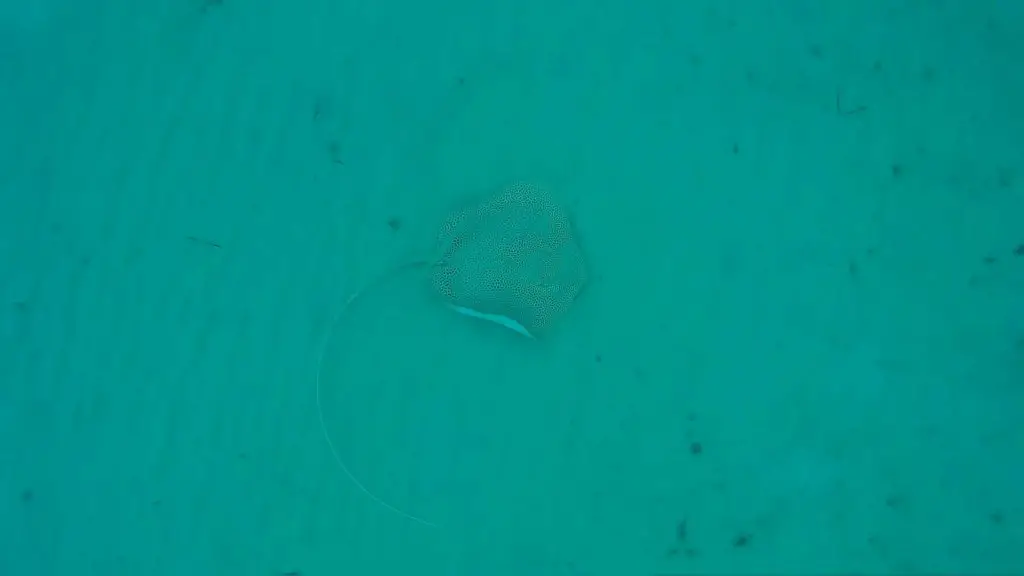
Second time lucky with Aban
After half an hour of scouring the seas we got back on board and waited. As these are wild animals there are no guaranteed sightings, and as time dragged on I started to lose hope. The rain was getting heavier. On that small wooden boat it felt like we were a leaf floating on the sea in a storm. Just as it felt like it couldn’t get any more miserable, about an hour and a half after we got on board, someone on board exclaimed and pointed in the distance. Put on the gear, and jumped in. Aban was home!
Face to face with a dugong
From the water surface it’s possible to see the dugong feeding on the seafloor. It was an indescribable sight. And then when it came up to breathe, just meters away, it felt like nothing else mattered. It was just majestic and graceful. After a few breaths of air it dived deep again to the seafloor for the sea grass. I didn’t venture beyond the water surface, but the guard helped me with the camera, diving right to the bottom and following it back up (from a distance large enough not to bother the dugong, of course). I was happy just to see it when it came up. This repeated for a couple of cycles, and I was able to extract couple of stills from the multiple dives.
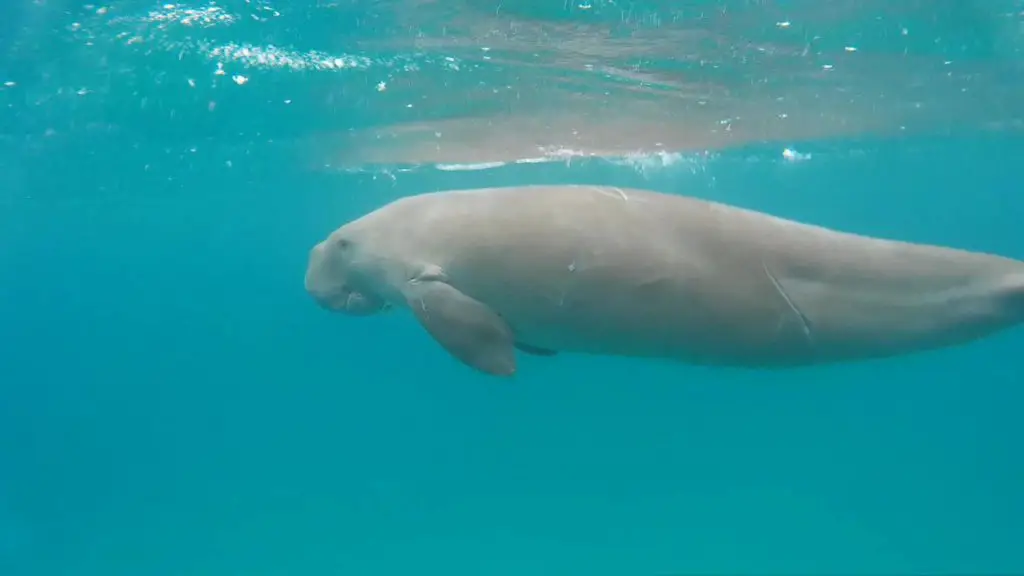
The dugong is not just an animal, it was a community, with fishes attached/ attracted to its nose and ass. Initially I thought it was some crap floating from its behind, then realized it was another fish.




After about half an hour we decided to call it a day. I came to Coron not expecting to go on a dugong tour, but this ended up being one of those experiences that’ll last a lifetime. One hell of a trip to get here, with a deep cut to boot, but it sure was worth it.
Visiting Calauit Safari Park
Back on dry land it was another long bumpy ride out back to the junction, then towards the pier to Calauit Safari Park. You can read more about how Calauit Safari Park came into existence on its Wikipedia article. Calauit was chosen as it was separated from Busuanga Island by a channel of water, effectively isolating the animals. Intentional or not, the creation of the safari park also resulted in better conservation efforts on Calauit, allowing native fauna populations to recover and flourish. So fast forward to 2019, all the original animals brought over from Africa have died out but some have bred successfully on their new island home and their descendants live on.
Usually people visit Calauit in the morning, so understanadably when I arrived past 3 in the afternoon there wasn’t anyone on the Busuanga side ready to get me across to the Calauit side. Staff helped to call up the boatman, who was probably quite far away at that time. The return trip, not included in the entrance fee, costs 500 PHP and is paid direct to the boatman.
By the time I crossed the channel and arrived at Calauit Safarai Park it was past 4, less than an hour before closure at 5pm. Staff were still working but I was the only visitor then. As time was running out and it was still drizzling I opted for the guided option on their park transport. The other option was walking the rest of the way, probably about 1-2 hours for a roundtrip. The transport costs 125 PHP.
Inside Calauit Safari Park
The park shuttle brings you through the main stops in Calauit Safari Park. What’s clear here is that this isn’t the typical zoo, as most animals roam freely. All around there were lots of zebras, giraffes and native deer. There are also other less frequently spotted animals in the park. Being the only visitor it was kind of a private tour too.
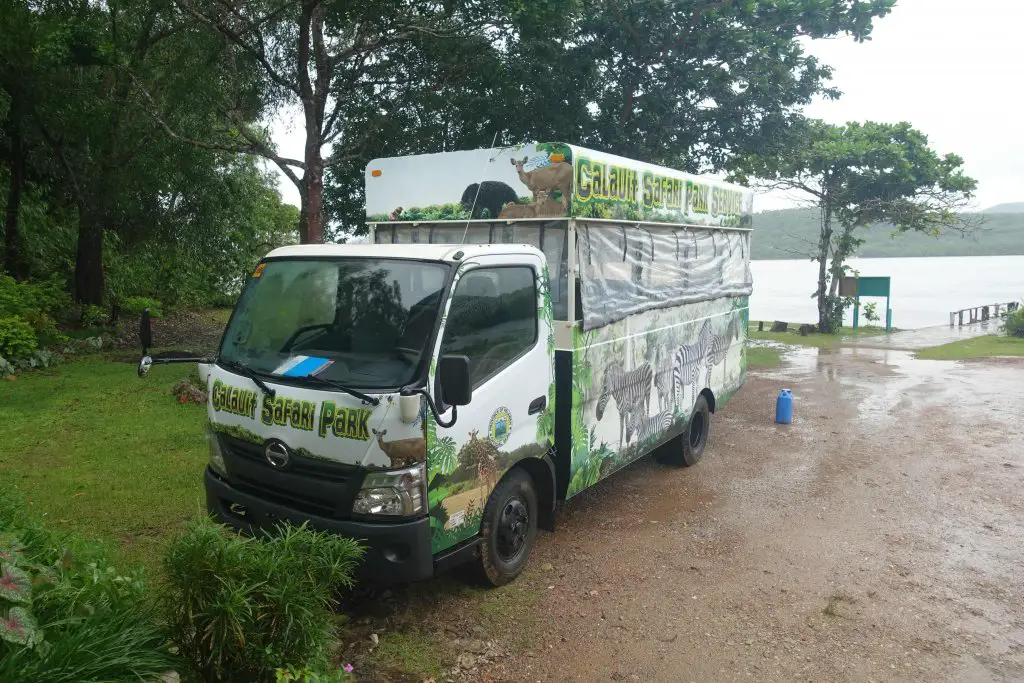
Just a few minutes from the muddy pier we arrived at the first stop, a large grassy clearing where zebras and giraffes were grazing. Quite an incredible sight, scenes that I’d never have expect to see in Southeast Asia. Granted, the rainy weather wasn’t pretty and it isn’t that expected dry Savannah landscape, but nonetheless an impressive sight of nature’s ability to adapt. Whatever reasons they were brought here for, they’ve managed to find a way to adapt and flourish.
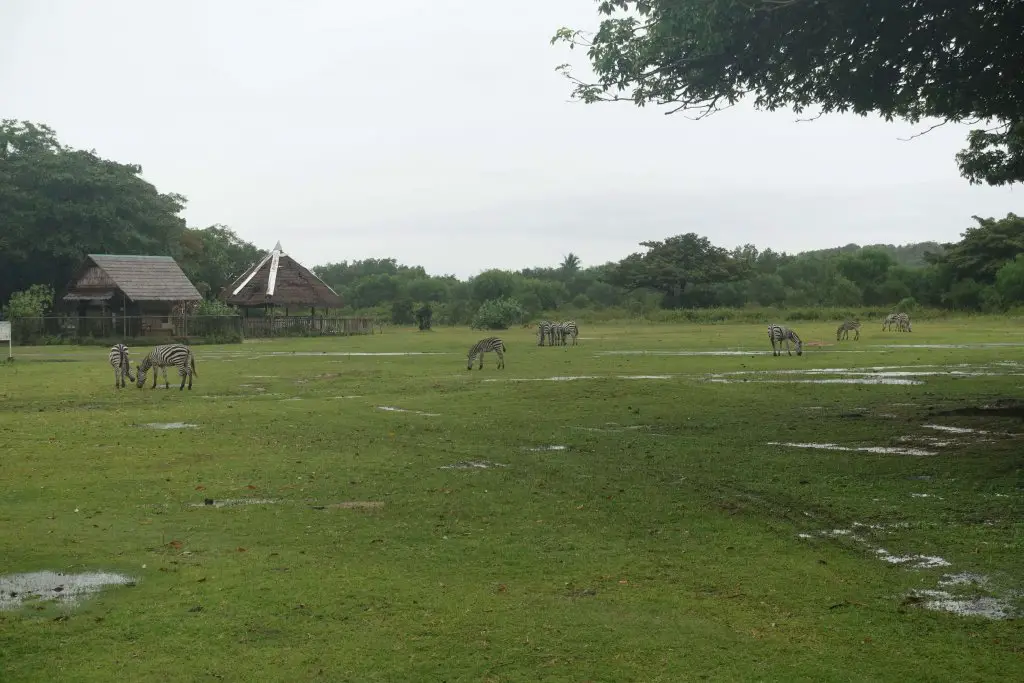

There’s a stop for feeding giraffes, which environmentalists may feel strongly about. Regardless, here’s a description of how it goes. You’d enter a fenced up area (the humans are the fenced up ones), staff will bring you some of their favorite leaves, and you can hold them up while giraffes strip the branches of their leaves with their powerful jaw, teeth, and long tongue. Felt a little like playing tug-of-war with the giraffes. Here they are waiting for their favorite snack.






The other animals of Calauit
Other than the animals roaming the grassy fields there were a couple of animals kept in enclosures. This is where it may be more debatable if what was done is good for the animals. According to the guide the animals in the enclosures are rotated every few weeks. They’d release the captive ones back, then find some in the wild to bring in. There were a couple of other animals in captivity other than those seen here, some in enclosures that seem to be in bad shape. Nonetheless the safari park seems to be giving locals much incentive in ensuring that wildlife on the island flourishes and I’m sure they’re doing what they can to balance between education, tourism and conservation.
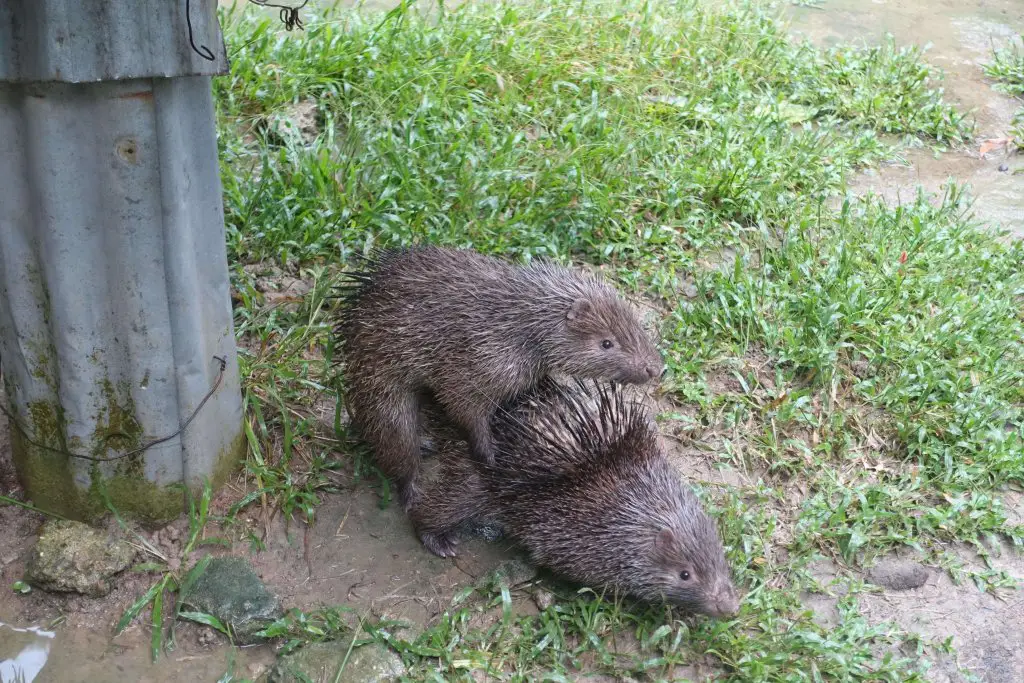


The 2 main stops along the way were at the grassy areas (including feeding) and at the enclosures area further in. After that it was back to the entrance.

Back to the pier just before 5pm, and staff were already packed up and ready to close. Back on Busuanga Island, it was another hour and a half to the next stop Malbato Chapel almost back at Coron Town.
Malbato Chapel
The original plan was to stop at Concepcion Falls along the way back, but as it was late that had to go. Also dropped from the schedule due to the turn of events was lunch, and in its place a snack stop along the way. Around 6.30pm we arrived at Malbato Chapel, after a long ride in the rain (in my googles, not looking really cool).


It wasn’t possible to go in, but from the gate it was possible to see the interiors. Had a rustic feel about it.
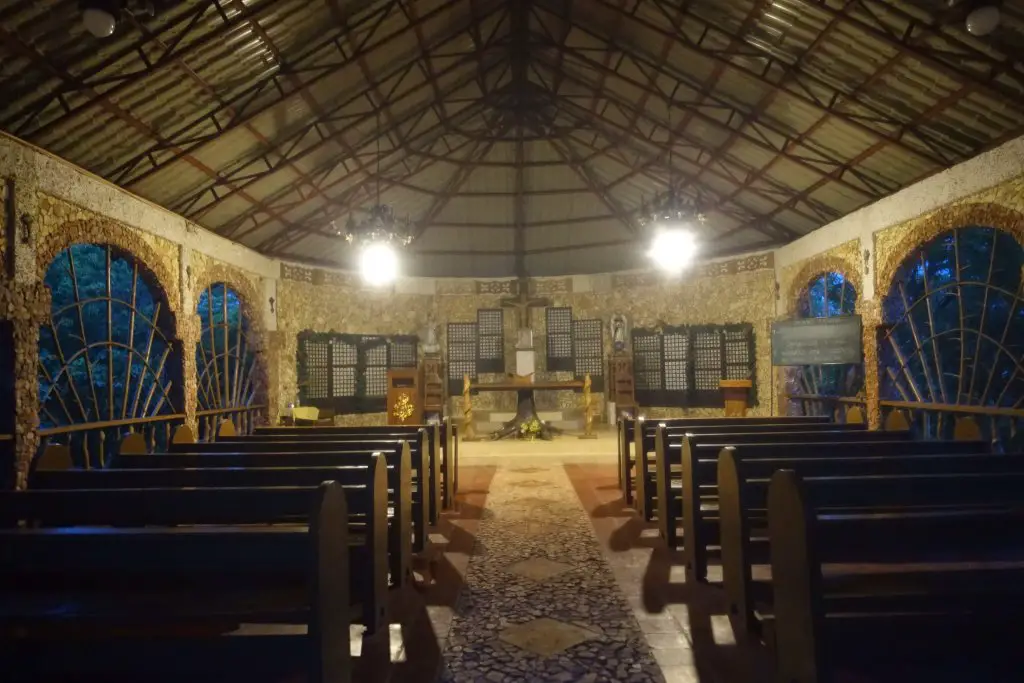
The reason the guesthouse had recommended me to visit Malbato Chapel was for the view, as it was on a hill. It was getting dark, and it was still cloudy from the rain, but it was still a beautiful sight.


Back to Coron Town
Given that it was already half past six by the time I reached Malbato, I had to also give up on completing Maquinit Hot Springs on the same day, as the last entry is at 7pm. I was glad to finish the exhausting day anyway, and was all ready for a good shower and big meal to complete the tiring but fulfilling day.
The full itinerary (planned)
- 6:00 am Leave Coron Town, Busuanga
- 8:00 am Reach Salvacion to buy Calauit Safari Park entrance tickets
- 9:00 am Reach Quezon Village for boat to Aban Aban Bay
- 9:20 am Stop by dugong watching office to pay park fees and pick up guard, then to Aban Aban
- 12:00 pm Back to Quezon Village
- 1:00 pm Reach Calauit Safari Park pier on Busuanga Island side
- 1:30 pm Reach Calauit Safari Park pier on Calauit Island side, proceed to Calauit tour
- 2:30 pm Complete Calauit Safari Park
- 3:00 pm Back on Busuanga Island
- 4:00 pm Reach Concepcion Falls
- 4:30 pm Leave Concepcion Falls
- 5:00 pm Reach Malbato Chapel
- 5:30 pm Leave Malbato Chapel
- 6:45 pm Reach Maquinit Hot Springs
- 8:00 pm Leave Maquinit Hot Springs
- 8:00 pm Back in Coron Town
The full itinerary (actual)
- 6:15 am Leave Coron Town
- 9:00 am Reach Salvacion
- 10:00 am Reach Quezon Village
- 2:00 pm Back at Quezon Village
- 3:00 pm Reach Calauit Safari Park pier
- 4:00 pm Reach Calauit Safari Park, Calauit Safari Park tour
- 5:00 pm Leave Calauit Safari Park
- 6:30 pm Reach Malbato Chapel
- 6:50 pm Leave Malbato Chapel
- 7:15 pm Back at Coron Town
The full cost (July 2019)
- Snorkeling mask rental from Carilo Guesthouse: 150 PHP
- Flippers rental from Sanya Dive Center: 100 PHP
- Scooter rental from Carilo Guesthouse: 400 PHP
- Driver: 800 PHP
- Petrol: 150 PHP + 110 PHP
- Calauit Safari Park Entrance Fee: 500 PHP
- Calauit Safari Park Environmental Fee: 100 PHP
- Dugong Conservation Area Entrance Fee: 500 PHP
- Dugong watching boat fee: 1500 PHP
- Calauit Safari Park boat fee: 500 PHP
- Calauit Safari Park tour: 125 PHP
- Total: 4,935 PHP
Skipped stuff (might want to factor in these costs if you’re attempting to complete them together)
- Lunch
- Concepcion falls: 50 PHP
- Maquinit Hot Springs: 200 PHP
The guesthouse
I would not have been able to complete this itinerary without the help from Jessica from Carilo Guest House, who helped to arrange transport and check the availability of the dugong boat and visit. Much of the tourism facilities don’t have official websites/ contact lines, and communication in English is not always easy with locals. It is best to liaise through a local who has contacts with these places and whom you can communicate with. The Carilo family was extremely friendly and helpful throughout my stay and went through the trouble of arranging the itinerary for me. I’d recommend a stay with them if you’re fine with shared dorms. Rooms and toilets are very clean and the family is always there to help you out for your stay in Coron.
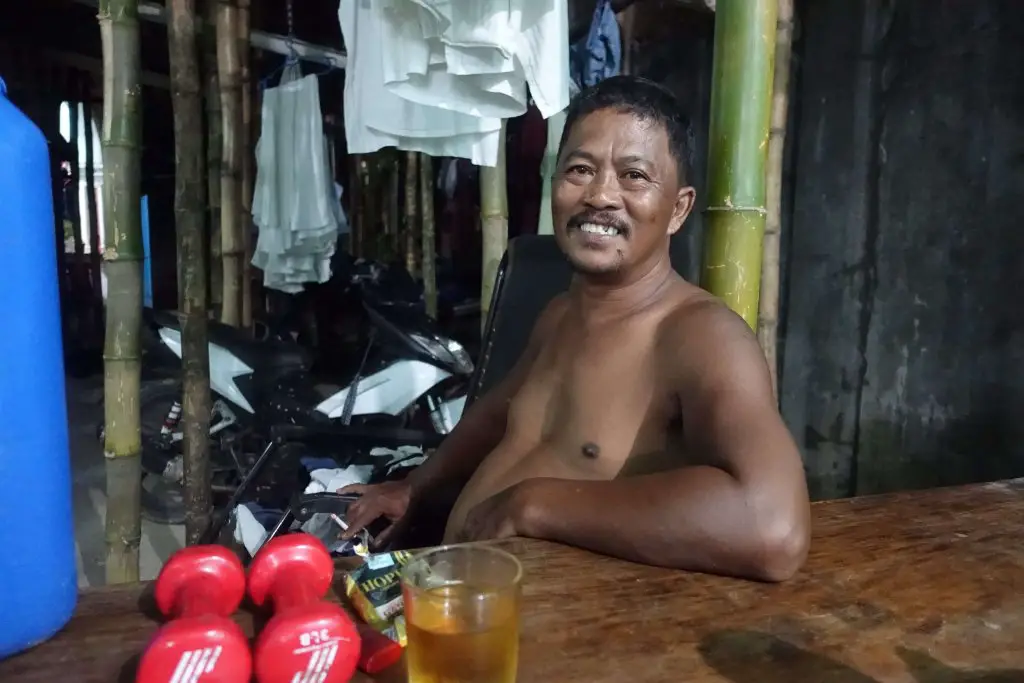
Final thoughts
Dugong watching and Calauit Safari Park were 2 things I wasn’t expecting to do in Coron, but definitely glad in the end to have done it. There’s more to Coron than beaches and wrecks, and these are 2 great examples of it. One small pity though was that my phone was sacrificed after the full day ride in the rain. Also, it turned out that it was not a usual rain but the start of a small typhoon that day, and the usual tour boats out had been cancelled, as were ferries to the other provinces. Really thankful for being safe after the dugong adventure. Another potentially risky adventure completed, more to come! But for the rest of my Coron stay, more family-friendly, less heart-stopping activities. More in the next post!
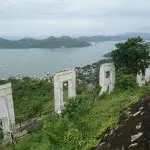


![[Australia] Tasmania Road Trip Part 5 - Bruny Island DSC04877-1200×800](https://aaronteoh.com/wp-content/uploads/2023/12/DSC04877-1200x800-1-150x150.webp)

Thank you for your detailed information! We went dugong-watching too and arranged it with Jessica from Carillo guesthouse because of your article! Thanks for sharing. Amd you are definitely right: Jessica is just amazing!
Glad to be able to help! Yup she’s awesome 🙂 Glad you enjoyed it too